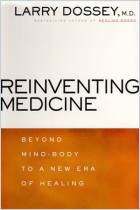Melden Sie sich bei getAbstract an, um die Zusammenfassung zu erhalten.

Melden Sie sich bei getAbstract an, um die Zusammenfassung zu erhalten.
Michael Pollan
The Trip Treatment
Research into psychedelics, shut down for decades, is now yielding exciting results.
The New Yorker, 2015
Was ist drin?
Research into psychedelics shows promising results for cancer patients with anxiety, but is it safe?
Recommendation
Journalist Michael Pollan explains the fascinating history of medical research into psychedelics and captures the sense of wonder among researchers and patients experimenting with them today. It’s hard not to be amazed by Pollan’s accounts of mystical, life-changing experiences – especially among patients facing death. The findings from patients’ brain scans also make intriguing reading. getAbstract recommends this article to anyone who wants to know exactly how the brain creates mystical experiences, either drug-induced or otherwise.
Summary
About the Author
Michael Pollan teaches journalism at the University of California, Berkeley.






















Comment on this summary